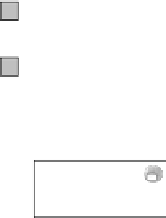Information Technology Reference
In-Depth Information
There are different approaches to designing the software architecture of
the system. The first step is to select the architectural style that best suits
the target application and user requirements (pipes-and-filters, client-server,
multi-layer, blackboard, toaster and so on). The selection of the architectural
style and the software methodology that helps the system designer make such
a selection are outside the scope of this topic. However, the RM-ODP is
independent of these processes because it was designed to work with any of
them.
In the case of the PhoneMob system, we can use a simple three-layered
software architecture, which is typical of many web-based and SOA systems.
This is an architecture in which the interfaces to users, the business logic
and the persistent data storage are separated in independent tiers (or layers).
Objects in each layer offer services to the other layers, creating a natural
organization of responsibilities and separation of concerns for this kind of
system.
However, in the enterprise specification we dealt with humans playing staff
roles, and modelled their interactions with the ODP systems supporting them.
We need to carry these interactions through into the computational specifica-
tion, where they are refined to give more detail of the human-computer inter-
face. To do this, we add a fourth layer to the architecture. Thus, the human
interface layer represents human actors, and the presentation layer holds the
software components responsible for interactions with the human users. The
RepairCentre
Staff
Human
GUI2RepairCentre
Staff
Presentation
Courier
Operations
Manufacturer
Operations
Login
Function
Application
Logistics
DataMgmt
DataMgmt
FIGURE 4.4: Division on one computational use case into the chosen tiers.



















